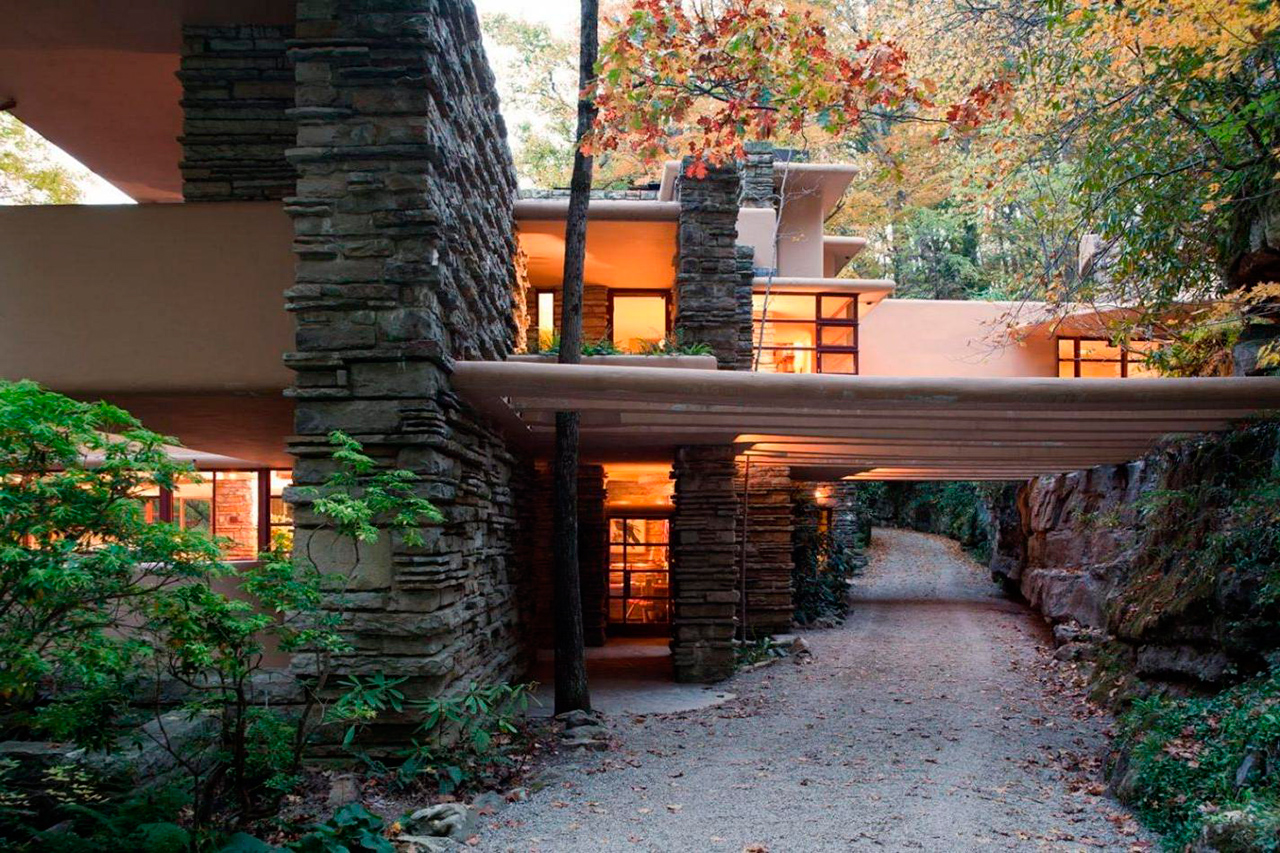
“I want you to live with the waterfall,” he told them, “not just to look at it, but for it to become an integral part of your lives.” Camouflaged Exterior Nevertheless, they trusted Wright, who reassured them with a philosophical promise. Regarded by the Kaufmanns as the centerpiece of the estate, they had hoped to have a view of the cascade. When designing the unique abode, Wright made one very surprising decision: to build the home above the property's naturally-occurring waterfall. Wright reportedly designed the home in a single morning in 1935. Nestled along a stream in Bear Run, an Appalachian reserve, this property was a perfect fit for Wright, whose nature-inspired approach had attracted Edgar and Liliane Kaufmann. In 1935, Wright was commissioned by the Kaufmanns, a prominent Pennsylvanian family, to replace their deteriorating summer home. Approaching each design as a microcosm of the universe, he sought uniformity through repeating patterns and was guided by a belief in “determining form by way of the nature of materials.” Additionally, he paid close attention to the setting of each structure, culminating in incredibly site-specific-and therefore fully integrated-designs like Fallingwater. This philosophy guided the ins-and-outs of Wright's entire creative process. Deeply rooted in his love of nature, organic architecture's primary intention is to unify buildings with their environments and visually blur the line between built structures and natural habitats. Wright coined the term “organic architecture” in the early 20th century.



As Wright's signature style, understanding the philosophy behind organic architecture is key to grasping the significance of the famous Fallingwater house. Wright described this 1930s home as “one of the great blessings to be experienced here on earth.” Inspired by the architect's desire to integrate human-made structures into the natural world, Fallingwater typifies organic architecture.


 0 kommentar(er)
0 kommentar(er)
